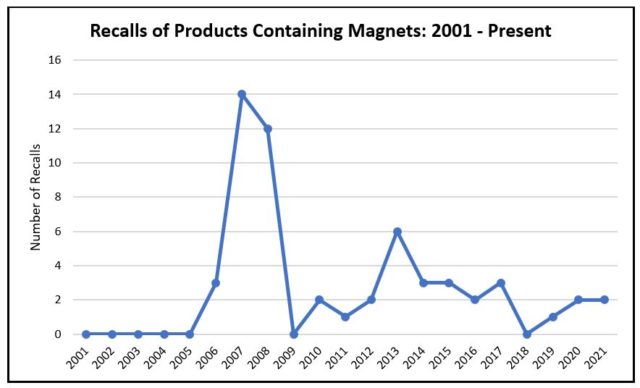Recalls in Review: A monthly spotlight on the trending regulatory enforcement issues at the CPSC.
As businesses brace for anticipated supply chain delays in the coming months, many stores are already offering impressive deals to early holiday shoppers. Recognizing that numerous popular products contain magnets, we turn our attention to CPSC regulatory actions involving magnets in this month’s installment of “Recalls in Review.”
At least 58 recalls involving magnets have been conducted since 1998, with 56 of those recalls occurring after 2005. The CPSC began monitoring magnets, magnet sets, and products containing magnets very closely in 2007, recalling eleven products amid reports that children were swallowing magnets and experiencing severe internal injuries. Similar recalls continued into 2008 and were accompanied by an increase in recalls of magnets for violations of the federal lead paint standard.
Unlike many other consumer products, no mandatory federal safety standard exists specifically to regulate magnets or magnet sets. The CPSC attempted to promulgate a mandatory federal safety standard to address high-powered magnets and published the regulation on October 3, 2014. Under the rule, magnets intended for use as part of a magnet set and that fit the CPSC’s definition of a “small part” could not have a flux index above the specified level. However, the rule was ultimately vacated by a federal court and removed from the Code of Federal Regulations. Still, the CPSC continues to monitor and recall high-powered magnets. The CPSC first sued Zen Magnets LLC in 2012 over their high-powered “Zen Magnets Rare Earth Magnet Balls” to force a recall of the products after discussions with the company failed to result in a voluntary recall plan. The Zen Magnets recall was finally announced in August 2021.
